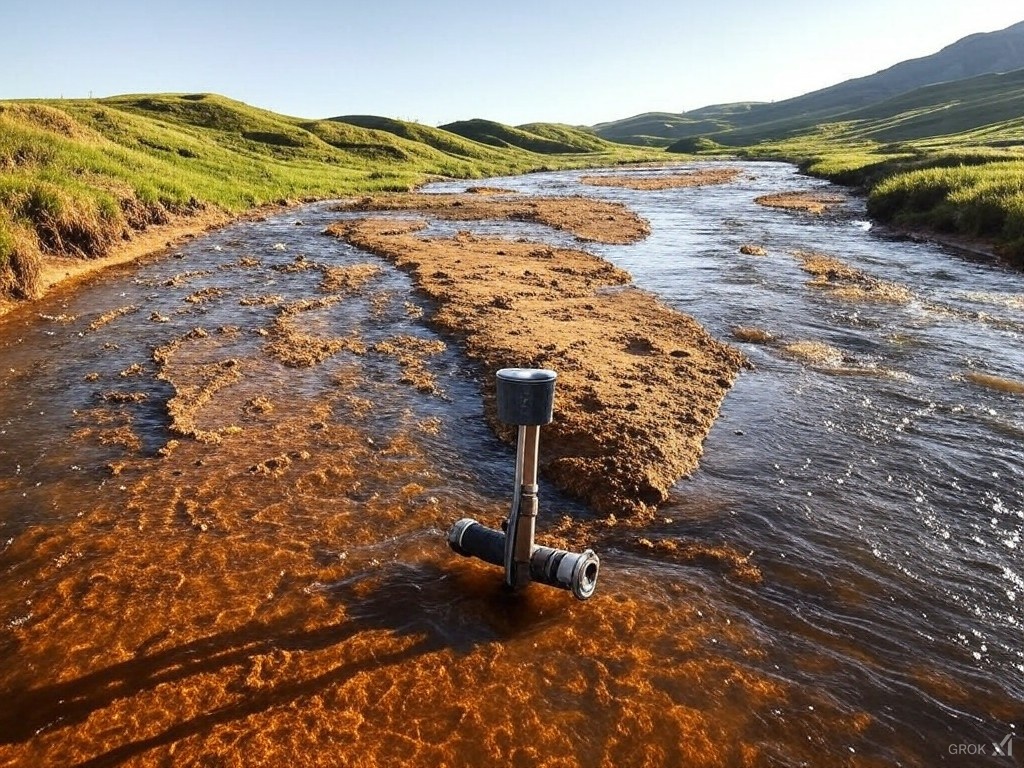
Navigating Shared Waters Amidst Scarcity
Kazakhstan, the largest landlocked country in the world, faces a looming water crisis, with climate change and inefficient agricultural practices straining its limited water resources. This challenge is further exacerbated by its dependence on transboundary rivers shared with neighboring nations. How can Kazakhstan balance its growing water needs while fostering regional cooperation and safeguarding its ecosystems?
Kazakhstan’s Growing Water Crisis
According to the World Meteorological Organization, by 2025, up to five billion people globally could experience water shortages. Kazakhstan, where agriculture consumes 65% of water resources, is among the most at risk. Inefficient irrigation systems waste more than half of this water, contributing to the drying of key rivers like Syr Darya, Ili, and Zhaiyk.
With seven major rivers over 1,000 kilometers long, Kazakhstan’s water supply largely depends on its neighbors. Only the Yesil River originates within its borders, while rivers such as the Syr Darya and Shu flow from the Kyrgyz Republic, the Irtysh and Ili from China, and the Zhaiyk and Tobyl from Russia. Effective transboundary water management is not just a domestic issue but a regional imperative.
The Role of Transboundary Rivers in Central Asia
Partnership with Uzbekistan
The Syr Darya River, originating in Kyrgyzstan and flowing through Uzbekistan, is a lifeline for Kazakhstan. A 1998 multilateral agreement involving Kazakhstan, the Kyrgyz Republic, Uzbekistan, and later Tajikistan established shared protocols for managing the Syr Darya Basin. However, implementation challenges persist due to competing agricultural demands and inefficiencies.
Joint initiatives with Uzbekistan, such as installing water-metering devices across borders, are improving transparency in water usage. Landscaping projects, like planting saxaul trees on the Aral Sea’s dried bed, aim to combat desertification. In Uzbekistan alone, 28,000 hectares were covered last year under the Yashil Makon (Green Region) project, a program to plant one billion trees over five years. Despite these efforts, upstream cotton farming and inefficient rice cultivation in Kazakhstan’s Turkistan and Kyzylorda regions deplete the Syr Darya’s flow.
Collaboration with the Kyrgyz Republic
Kazakhstan’s water security also depends on glacial melt in the Kyrgyz Republic. These glaciers, vital for the Syr Darya River, are shrinking due to climate change. Over the last 50 years, glacial coverage has declined to 6,683 square kilometers, with further reductions of up to 40% predicted next year. This threatens not only Kyrgyz communities but also Kazakhstan’s 42% reliance on transboundary water.
Tensions with China
Kazakhstan and China share 25 rivers, yet disputes over water allocation from the Ili and Irtysh Rivers remain unresolved. China’s growing population in the Xinjiang Uygur Autonomous Region and plans to irrigate 600,000 hectares of land by 2050 threaten Kazakhstan’s water share from the Ili River. This could reduce Kazakhstan’s access by 40%, imperiling Lake Balkhash, which depends on the Ili for 70% of its water. While a draft intergovernmental agreement is under discussion, no resolution has been reached.
Shared Resources with Russia
Collaboration with Russia under the 2010 Agreement on Joint Use and Protection of Transboundary Waters has seen mixed results. Rivers like the Zhaiyk and Irtysh remain in poor condition despite regular meetings. Recent initiatives, such as increased water releases from Russia’s Iriklinsky reservoir, aim to improve water flow during critical periods. However, long-term solutions require more robust bilateral cooperation.
Kazakhstan’s Strategic Measures
Recognizing the urgency of the crisis, Kazakhstan has launched extensive water management initiatives:
- Reservoir Development: By 2030, 42 reservoirs will be constructed to store 2.6 cubic kilometers of water.
- Irrigation Modernization: The reconstruction of 14,000 kilometers of canals has already reduced water losses by 25%.
- Infrastructure Projects: Ongoing projects include rehabilitating 575,900 hectares of irrigated land and building 2,500 kilometers of canals.
- Digital Solutions: The government is digitizing 3,500 kilometers of irrigation networks in key provinces to optimize water use.
Additionally, Kazakhstan has improved transboundary cooperation, securing over four billion cubic meters of water from Uzbekistan, Tajikistan, and the Kyrgyz Republic in 2024 alone. Measures to restore ecosystems, such as replenishing the Aral Sea with two billion cubic meters of water, reflect a commitment to environmental sustainability.
Political and Economic Implications
Political Challenges and Opportunities
Kazakhstan’s reliance on transboundary rivers necessitates strong regional diplomacy. Agreements with Uzbekistan and Kyrgyzstan highlight progress, but unresolved disputes with China over the Ili River underline vulnerabilities. Climate change exacerbates these challenges, requiring innovative policies and international support to ensure equitable resource sharing.
Economic Impacts and Sectoral Implications
The agricultural sector faces the brunt of water scarcity. Companies like KazAgro must adopt water-efficient practices, such as laser leveling and drip irrigation, to sustain productivity. Innovations from firms like Valmont Industries, specializing in precision irrigation, could offer long-term solutions.
Meanwhile, industries such as fisheries and hydropower also face risks. Restoring water levels in rivers like the Ili and Zhaiyk is crucial to maintaining biodiversity and energy production capacity. Companies engaged in eco-restoration, such as World Saxaul Initiative, could benefit from government-backed projects in degraded areas.
What’s Next?
Kazakhstan’s path forward involves balancing infrastructure development with diplomatic negotiations. Immediate priorities include finalizing water-sharing agreements with China, expanding reservoir capacities, and adopting climate-resilient technologies in agriculture. Long-term success hinges on regional cooperation and innovative solutions to counter the accelerating impacts of climate change.
Quick Insights
- Kazakhstan relies on neighboring countries for 42% of its water, highlighting the importance of transboundary cooperation.
- Inefficient irrigation systems and climate change exacerbate water scarcity, especially in agriculture-heavy regions.
- Disputes with China over the Ili River threaten Lake Balkhash, a critical water source.
- Infrastructure investments, including reservoirs and digitized irrigation networks, aim to mitigate water loss.
- Regional diplomacy and innovative technologies are essential for sustainable water management.



